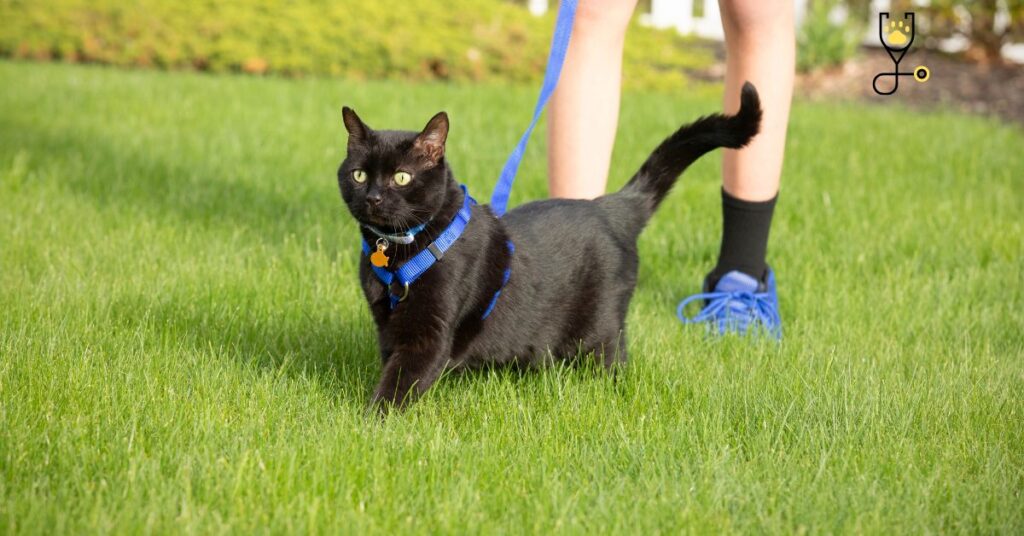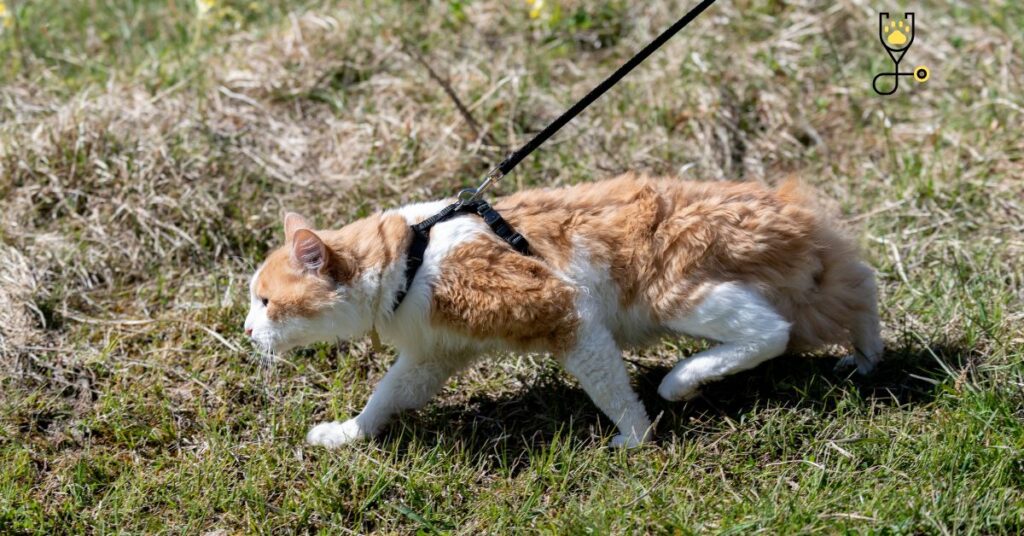Dogs are commonly known as “man’s best friend.” But what about cats? They’re just as loving, loyal, and cuddly as dogs! In fact, according to the Humane Society of the United States, there are around 86.4 million cats living in American homes. That’s a lot of love! And while some people argue that cats don’t need to be walked on leashes because they can take care of themselves, I think it’s a great way to give your cat some extra exercise and bonding time with you. Plus, if you take your cat for walks on a leash, you’ll never have to worry about them getting lost or running away again. Ready to learn how? Keep reading for my top tips on how to train your cat to walk on a leash!
What is a leash?-cats
A leash is a tool that attaches to a harness, allowing you to control and direct your cat’s movement when outside of the house. It can also be used for training purposes to teach your cat to walk calmly by your side.
Leashes are especially important for keeping outdoor cats safe from potential dangers such as busy roads, aggressive animals, and cruel people.
Amazing tips to Train Your Cat to Walk on a Leash
1. Get your supplies
Before starting leash training, make sure you have the right equipment: a harness (not a collar), a lightweight leash, and treats or toys for positive reinforcement. Make sure the harness fits properly and isn’t too tight or loose on your cat.
2. Let your cat get used to the harness and leash
Before actually going for a walk, let your cat sniff and explore the harness and leash. Give them treats while they’re wearing them to associate them with something positive. You can even try feeding them their meals while they wear the harness to make it an enjoyable experience for them. Gradually increase the amount of time they wear the harness until they are comfortable with it on for longer periods of time.

3. Start slow
When starting actual leash training, do so in a quiet, low-distraction area such as your living room or backyard. Hold onto the leash loosely but firmly, and allow your cat to explore at their own pace, following them rather than leading them. Give them treats and praise when they walk calmly on the leash.
4. Take it outside
Once your cat is comfortable walking in a low-distraction area, gradually increase their exposure to new environments by taking them for walks outside. Choose quiet, low-traffic areas at first and always supervise them closely. If they become scared or overwhelmed, take a break and try again another day.
5. Practice makes perfect
Consistency is key with leash training, so be patient and keep practicing! It may take some time for your cat to get used to walking on a leash, but with patience and positive reinforcement, it will eventually become confident and comfortable walking alongside you on adventures outdoors. Who knows- maybe they’ll even enjoy it as much as you do! Happy leash training, fellow cat lovers!

6. Don’t force it
If at any point during leash training, your cat shows signs of fear or discomfort, take a step back and reassess the situation. It’s important to never force them to do something that makes them uncomfortable. Consider consulting a professional trainer for additional guidance and support.
7. Safety first
Always supervise your cat while on walks and make sure they are not approaching any dogs or other animals that may pose a threat. Be aware of your surroundings and remove any potential hazards such as busy streets or poisonous plants.
8. Keep up with regular vet visits
Leash walking can be physically demanding for cats, so make sure to keep up with regular checkups and ensure they are in good health before taking them on walks. Also, consider purchasing pet insurance to ensure they have access to proper medical care in case of any accidents or injuries while on a leash.
9. Have fun and explore!
Leash training can be a fun bonding activity for you and your feline friend. So, grab that harness and leash and go explore the great outdoors together! Who knows- maybe your cat will even become the neighborhood’s coolest cat (pun intended).

10. Seek professional help
If you’re having trouble with leash training or have any concerns, don’t hesitate to seek professional guidance from a trainer or veterinarian. They can offer advice and support to ensure both you and your cat have a positive and safe leash-walking experience.
Conclusion
Leash training may seem like a daunting task, but with patience and positive reinforcement, it can be a fun bonding experience for you and your furry friend. Just remember to start slow, take things outside gradually, and seek professional help if needed. Happy leash training!
Frequently Asked Questions
1. How long does it usually take to leash train a cat?
There is no set timeframe for leash training a cat, as every animal learns at their own pace. Just be patient and consistent with the process, and eventually, your cat will get comfortable walking on a leash.
2. Do all cats need to be leash trained?
No, all cats do not need to be leash trained. Some felines enjoy exploring the great outdoors, while others prefer to stay indoors. It ultimately depends on your cat’s personality and preferences.
3. Is it safe to take my cat for a walk?
Yes, it is safe to take your cat for a walk as long as you supervise them closely and avoid any potential hazards such as busy streets or poisonous plants. Always consult with your veterinarian beforehand to ensure your cat is in good health and up-to-date on their vaccinations.
4. How often should I walk my cat?
There is no set answer, as some cats enjoy longer walks while others prefer shorter ones. Just listen to your cat’s cues and let them dictate the pace.
5. What type of harness and leash should I use?
The type of harness and leash you use is ultimately up to you, but it’s important to find a comfortable fit that won’t restrict your cat’s movement. You may need to experiment with different styles before finding the right one for your feline friend.







